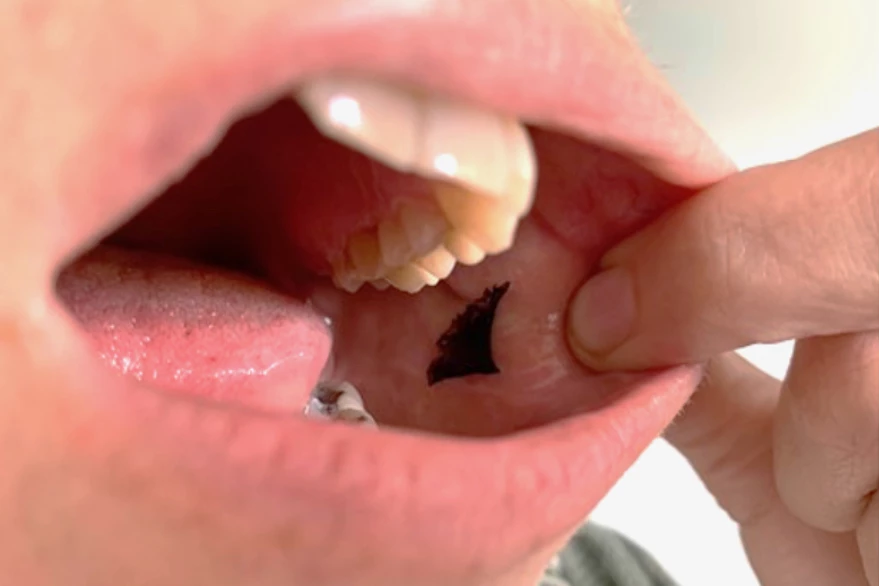Diabetics typically have to receive insulin via daily injections, or sometimes even from implanted pumps. According to a new study, however, a simple inner-cheek patch could one day provide a far less painful and invasive alternative.
The research project is being led by Sabine Szunerits, a Professor of Chemistry at France's University of Lille. Working with colleagues from France, Spain and Turkey, she decided to revisit an experimental heat-activated drug-delivery material that the team had previously developed.
The material takes the form of a small mat made up of electrospun nanofibers of a polymer known as polyacrylic acid, a molecule by the name of beta-cyclodextrin, and reduced graphene oxide.
For the recent study, patches made of the material were soaked in an insulin solution for three hours, after which they were applied to mucosal membranes harvested from the cheek linings of pigs. A near-infrared laser was then used to heat each patch to a temperature of 122 ºF (50 ºC) for 10 minutes.

Doing so triggered the patches to begin releasing their absorbed insulin, which quickly made its way through the thin membranes. By contrast, previous studies have shown that when insulin-containing gel is topically applied to much thicker (and thus less permeable) external skin, the insulin simply takes too long to get through and enter the bloodstream.
In a further proof-of-concept experiment, the insulin-soaked patches were applied to the inner cheek linings of three live, insulin-dependent pigs. The patches were then externally heated by placing a laser pen against the outside of each animal's cheek for 10 minutes. As soon as the material was activated, the pigs' blood sugar levels dropped and their plasma insulin levels increased. The full dosage was delivered over a period of 20 minutes.
Importantly, their cheek linings showed no damage or signs of irritation. Likewise, when six human test subjects wore placebo patches in their cheeks for two hours, they reported no discomfort. And as an added bonus, the patches can be reloaded and reused multiple times.
Szunerits tells us that the team is currently seeking commercial partners to help fund clinical trials on humans. In the meantime, further animal trials are being planned.
The research is described in a paper that was recently published in the journal ACS Applied Bio Materials.
Source: American Chemical Society




